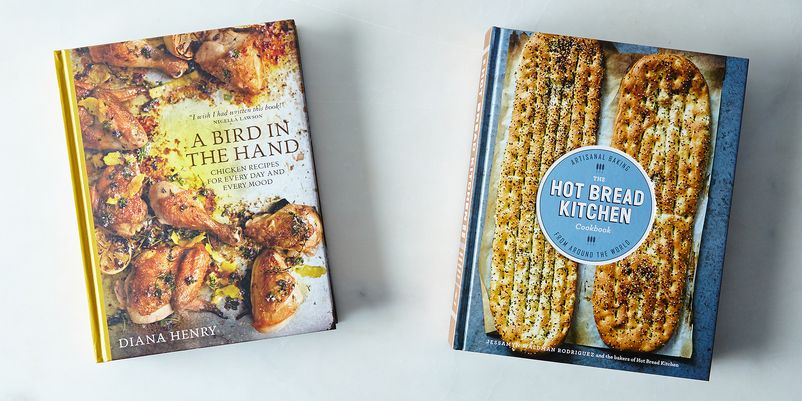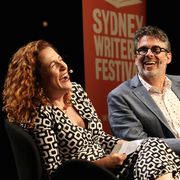The Hot Bread Kitchen Cookbook is authored by a Canadian named Waldman, so my first Piglet tournament task was to call my father in order to figure out whether the author and I are related. The answer to my question required a disquisition on the lives, personalities, and marital misadventures of my paternal grandfather’s sisters Rachel, Bertha, and Fanya, despite the fact that none of them produced any offspring named Waldman. Eventually, it was determined that like the “Fish Waldmans,” who own a successful chain of poissonneries in Montreal, Jessamyn Waldman Rodriquez is not related to the family of my grandfather, better known as the Impoverished Schmatte Waldmans.
Then I made some bread.
Or, rather, I began what’s essentially the two-day procedure of making bread, mixing up the pâté fermentée that is the base of many of the bread recipes in the book. Almost immediately, I became annoyed by the finickiness of the measurements prescribed by The Hot Bread Kitchen Cookbook. The recipe for pâté fermentée calls for 2/3 of a teaspoon of yeast. I have no 1/3 teaspoon measuring spoon! Do you? Do measuring spoon sets usually come with 1/3 teaspoons and both of mine are just missing?
That was the first of a series of measurement annoyances encountered while cooking with this book: What the hell is up with calling for a cup plus 1 teaspoon of water? I mean, does anyone in the entire universe measure water that accurately? I get that in your professional kitchen you usually work with weights, and when you make whole-wheat challah you make 98 loaves, not 1, but is this cookbook for home cooks or not? I spent a lot of time over the two weeks I spent testing muttering things like, “You can’t just divide your goddamn recipe by 98 or 908 and call it a day, damn it.”
And another annoyance: There are otherwise easy-to-follow instructions for mixing bread, including the windowpane test for checking gluten, which involves stretching the dough and looking through it, a method that, Waldman explains in the introductory how-to section of the book, doesn’t work for whole grain doughs. Yet in the recipes for both the whole wheat challah the whole wheat pita bread, she tells you to do the windowpane test! Which didn’t work no matter how much I kneaded. As I grew more familiar and intimate with my sense of irritation with Ms. Waldman and her damn windowpane mishegas, I began to suspect that we must, in fact, be related after all.
Though the book itself was well-designed, with plenty of photographs and illustrations, my mood in baking the hamburger buns (or writing this review), was not improved by having to wake up and start baking at what felt like dawn (but, okay, may have been 9 A.M.—I’m a late riser) in order to make sure supper would be on the table at a normal hour. It was hard not to think somewhat bitterly of the gorgeous Acme Bakery rolls lolling fragrant and golden in a bin in the grocery store around the corner from my house. I experienced an even more dramatic sense of the futility of my efforts when I dropped by Oasis Food Market on Telegraph Avenue in Oakland for some of their delicious hummus and labneh—I would be serving falafel and was in the middle of a rise for the whole wheat pita—and noticed the beautiful pitas floating like puffy whole grain clouds out of the Oasis pita oven.
But here’s the thing: The breads we baked out of Hot Bread Kitchen tasted amazing. People actually said things like, “This is the best pita I’ve ever eaten in my life.” The challah buns were stunningly beautiful and off-the-hook delectable. This might be because we used the best flour, locally grown and milled by Full Belly Farm. Sure, the cost per bun came to the low three figures, but who cares! They were delicious, and we made them!
Okay, Imaginary Cousin Waldman, your cookbook stressed these non-bread bakers out, but the final product? Amazing.
On to the second cookbook, A Bird In the Hand: Chicken Recipes for Every Day and Every Mood, by Diana Henry. From the first, though we tried to preserve open minds and a sense of adventure, we found something uninspiring, conceptually, in this cookbook. God knows there is no shortage of moods in our household, but so few of them have to do with chicken! Chicken recipes, furthermore, are among the easiest to find—if anything, we are awash in recipes for chicken, and have a hard time keeping track of all the very good ones we have tried over the years. Input the word “chicken” into the recipe database of this very website and you turn up 4,610 results.
Still, we took our roles as judges with due solemnity and sense of obligation. And so we proceeded.
We started with Thai chicken burgers, to be served on the aforementioned irritating yet glorious Hot Bread Kitchen buns. Again with the bizarre measurements! 1 pound, 2 ounces of ground chicken? Seriously? You couldn’t just go with a pound? And, Ms. Henry, does one really need exactly 10 1/2 ounces of carrots for the accompanying (tasty if not revelatory) slaw recipe? Wouldn’t “five or six medium carrots” do just as well? It’s a slaw, for heaven’s sake, not the formula for Semtex! Such hyper-precision may be the result of metric conversion—Henry lives and cooks in Britain—but to even the moderately experienced cook, the carrot is, in itself, among the most reliable of vegetables, practically a unit of measurement in itself.
We were puzzled by the fact that a burger recipe which claimed to serve six would only call for the aforementioned annoying 1 pound plus 2 ounces of protein. Six burgers around here usually takes at least two pounds of protein. It was only belatedly—and not, alas, without a certain amount of strife—that we realized the secret of Ms. Henry’s mysterious, scant 18 ounces: Her burgers are mostly bread!
I’m sure Ms. Henry had no intention of precipitating a marital squabble, but I blame her anyway. When I saw Michael, who was in charge of the burgers, toasting all that bread for breadcrumbs, I said, “Ew! What are you doing?”
“Following the recipe,” he said.
“It’s too bready.”
“It’s the recipe.”
“No way.”
I snatched the book. The recipe called for a cup of breadcrumbs! For a little over a pound of meat! You won’t be surprised to read that the burgers were spongy, cottony, and, well, bready. Not really burgers at all. The flavor was nice, gingery and bright, but they had the unmistakably stretched quality I remembered from the breadcrumb-heavy “hamburgers” my compulsively thrifty grandmother used to make. My Savta learned to cook during the Great Depression. Perhaps Ms. Henry was giving a Thai twist to some old wartime Ministry of Food "The Kitchen Front"-type rationing recipe?
Henry’s instructions are easy enough to follow, as they were in the rye schnitzel with mustard sauce we made—though my family much prefers it with breast rather than thighs, and the sauce was a bit heavy on the cream—and her prose is serviceable. However, though the photographs in A Bird in the Hand are lovely, there were too few of them. Puerto Rican Chicken and Rice, for example, might be delicious, but we found it just too hard to get inspired by a chicken recipe without a picture sexing it up.
In the end, though the recipes we tried were by and large more than acceptable, nothing from A Bird in the Hand impressed us or our family of taste-testers like the various breads and buns from Hot Bread Kitchen.
The winner—in spite of certain stresses and irritations—The Hot Bread Kitchen Cookbook.



47 Comments
Also, after some quick research I could not find a 1/3 teaspoon anywhere, but there is, for some reason, a 2/3 teaspoon included in quite a few of the "odd size" measuring spoon sets available.
The reviewer's point is well taken; one would hope that Clarkson Potter's and other publisher's editors converting commercial formulas to recipes for home bakers will keep it in mind. (I'm a bit surprised that during their testing process it wasn't mentioned. Perhaps Clarkson Potter need to get some less experienced bakers involved, to catch such user experience issues.)
That kind of detail doesn't bother me, because I have a lot experience baking bread, grappling with conversions and figuring out workarounds, but I realize not everyone else does. ;o)
You need to do better than this if you want any modicum of informed and reliable judgment pass, Food52. Especially this late in the competition, and especially when most of the reviews prior to Phyllis Grant's had little enjoyment or depth to it.
I have many bread books, The best of which is Flour, water, salt, yeast. But that is a very cumbersome group of recipes. If the reviewers thought Hot Breads was overly complicated, and she should use a scale, it is pretty concise for a bread book. I was looking for a book that was very flexible with time, and did not have my kitchen covered in flour. Once she got me over the disdain of using my mixer for home baked bread, it was smooth sailing. There are many kinds of bread in the book. I will never make stuffed bread, and likely not tortillas, but she almost has me convinced. There is an actual recipe for sandwich bread. She also has a technique for adding soaked grains, which is very easy and in other bread books would take two pages.
I really admire the author working with immigrants, and what she has created.
I really like both books, but currently I am glued to Hot Breads.